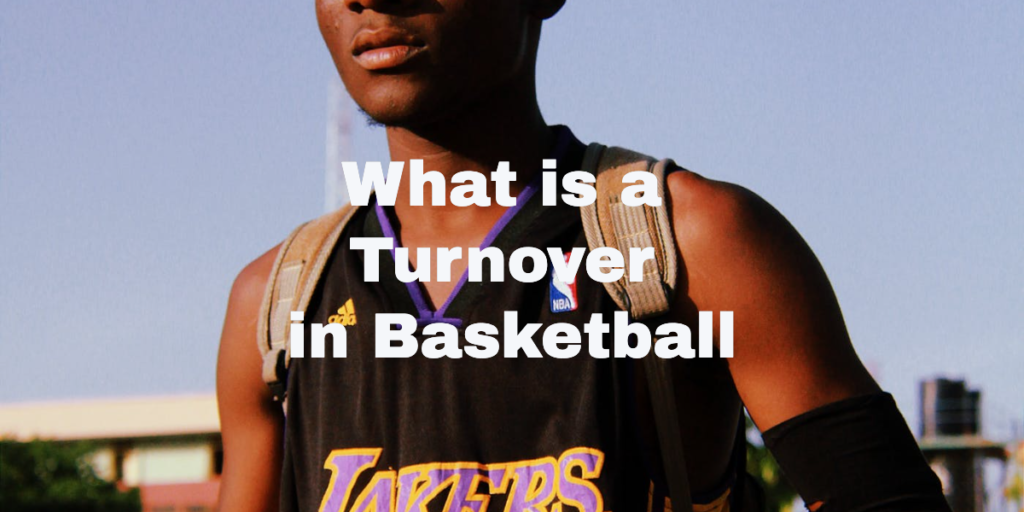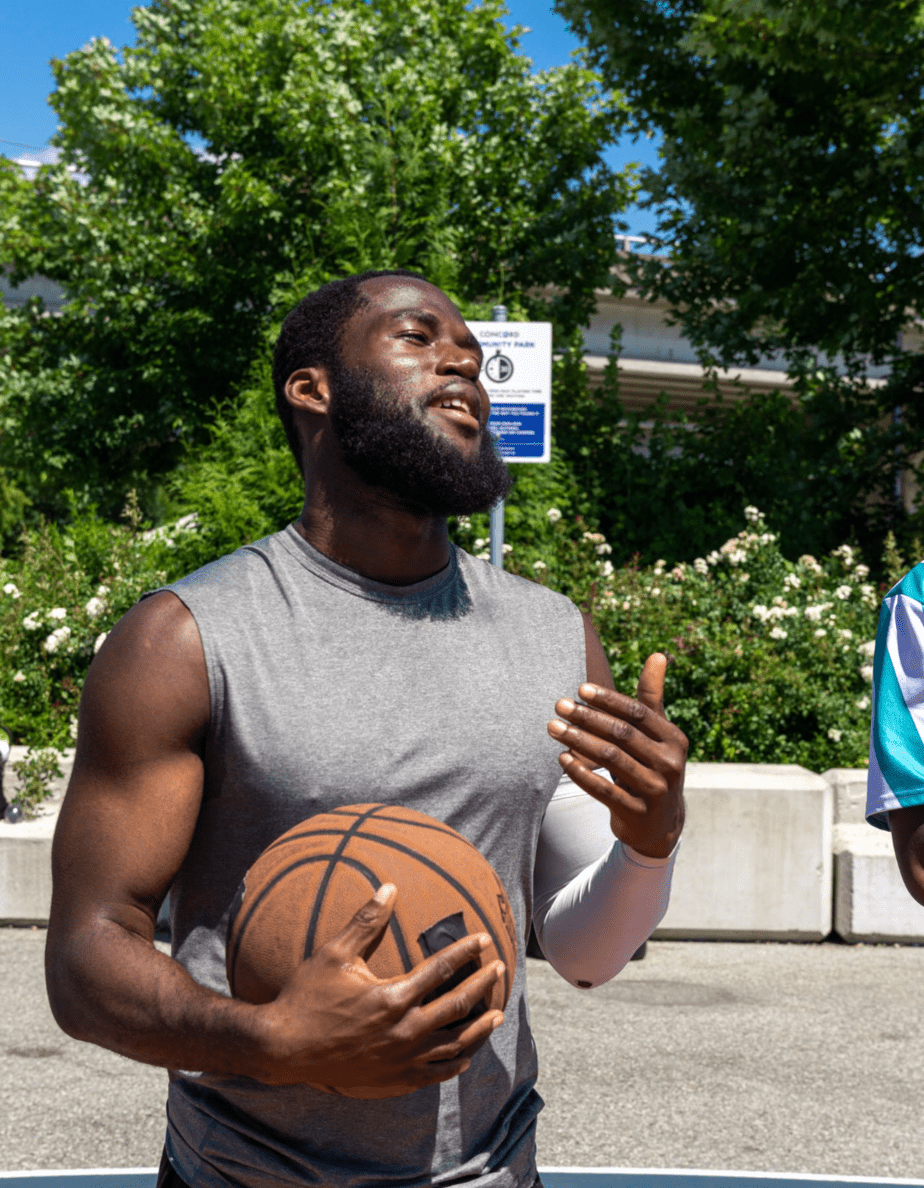What Is a Turnover In Basketball: Forced, Unforced and Violations
In basketball, a turnover is a loss of possession to its opponents because of an error or violation. This could be because they made a bad pass, had their dribble stolen, or just lost the ball. Turnovers can often be a result of poor teamwork or an individual trying to do too much on their own. If the offensive team commits a foul, that is considered a turnover as well. It is interesting that neither the official NBA rulebook nor NCAA basketball rulebook even mentions the word turnover. Let’s officially answer the question “what is a turnover in basketball”.
We have to go down to the Jr.nba.com site to get the official definition:
A player is charged with a turnover if they lose possession of the ball to the opposing team before a shot is attempted.
Types of Turnovers
Forced Turnovers: Any turnover that is caused by the opponent. Examples may be trapping and forcing a player to make a poor decision or any turnover caused by pressure from the defense.
Unforced Turnovers: An offensive mistake such as passing the ball directly out of bounds, fumbling the ball, or dribbling off your foot that results in the defensive recovering the ball results in an unforced turnover.
Violations That Cause A Turnover in Basketball
These are some violations in basketball that will result in turning over the basketball to the other team.
- Walking or traveling
- Double dribble
- Held ball violation
- Shot clock violation
- 3- second in in the lane violation
- 5-second inbound violation
- 10-second backcourt violation
- Any offensive foul
- Goaltending
- Charging
- Carrying or palming
Top 10 NBA Turnovers Of All Time Video
What Causes a Turnover?
In the above paragraphs, we discussed turnovers caused by the defense (force turnovers) those self-inflicted (unforced turnovers), and those caused by offensive violations. Most basketball leagues don’t keep specific stats on the type of turnover but normally just that the turnover occurred.
In high-level basketball such as NCAA Division 1 and the NBA, teams may keep their own stats on what specifically caused the turnover. In general, most turnovers will be forced turnovers and then those caused by offensive violations and then unforced turnovers. When you get down to younger youth level basketball you may find unforced errors higher on that list.
Top 10 NBA Turnover Leaders of All Time
You will notice that many of the players in this list were great all-time players (2 are still playing noted with the asterisk) with long careers. If you are a great offensive player then you have the ball in your hands a lot and have many more opportunities to turn the ball over.
| Rank | NBA Player | Turnovers | |
|---|---|---|---|
| 1. | LeBron James*4,7362. | Karl Malone | 4,524 |
| 3. | Moses Malone | 4,264 | |
| 4. | John Stockton | 4,244 | |
| 5. | Russell Westbrook* | 4,131 | |
| 6. | Kobe Bryant | 4,010 | |
| 7. | Jason Kidd | 4,003 | |
| 8. | Julius Erving | 3,940 | |
| 9. | Artis Gilmore | 3,926 | |
| 10. | Isiah Thomas | 3,682 |
How to Avoid a Turnover
It’s important for team members to work together and pay close attention to the coach. Poor play in practice usually leads to turnovers in the game. Here is a hit list of items and a video that will help you avoid turnovers if you put the suggestions into practice in the future:
- Be quick but not in a hurry
- Change speeds when you are dribbling
- Watch game film to recognize situations
- Train harder and faster so you are used to the speed in a real game
Video That Will Help You Decrease Your Turnovers in Basketball
Poor footwork is the number one cause of turnovers. To avoid these, we recommend a variety of footwork drills: jump stops, facing the basket on every catch, front pivots, reverse pivots, step-throughs, sweeps, and drop steps.
Watch footage of your games and show the player their own turnovers. If the player can see themselves on video, it can be a great learning tool. Chart where the turnovers come from. Who made the turnover? What kind of turnover (travel, post feed, forced pass, leaving feet, missed catch, etc)? All of this can help in getting to the root problems and figuring out what you need to work on.
Use fast-moving passing drills instead of stationary passing drills. You get more repetitions in practice and the fast pace mimics game speed. In the game, players are moving targets and passers need to learn how to lead a player rather than throwing directly to them.
Last, you’ll want to track for games and scrimmages if you have enough coaches or assistants to do so. This will give you more data to help diagnose the problems. Read on to the next section to see what turnover stats are valuable.
Turnover Stats – Can They Help?
Most teams and statisticians track the total number of turnovers. But you can combine that number with other aspects of the basketball game that can give you different perspectives. Here are a few that you can use:
Turnover Differential – This compares your team’s number of turnovers to your opponent’s total number of turnovers. If you have 5 or fewer turnovers than your opponents (a turnover differential of -5) you are in really good shape. The lower your number goes the better.
Turnovers Per Possession – This compares the number of turnovers to the team’s number of possessions in a game. Also referred to as turnover percentage, this gives you a truer picture since it takes into consideration a faster-paced game with more possessions. You may have more total turnovers but relative to possessions it may be an acceptable ratio. As an example, an NBA team may range from 12% to 16% of their possessions ending in a turnover.
Assist to Turnover Ratio – This is an individual player stat that compares their assists to turnovers in a game or over a season. In most cases, you want to see a 3 to 1 ratio. Especially for your point guard and your other primary ball handlers.
Tracking the numbers can make a big difference in knowing how you stack up against the other team. Statistics demonstrate that turnovers in basketball are a direct connection to the number of wins and losses. A team with fewer turnovers will normally win the game.
Closing Thoughts on What is a Turnover in Basketball
The bottom line is turnovers happen, and they happen to the best of us. Follow some of the tips given in this article to improve your game and win the turnover battle. More importantly, you can now answer the question of “what is a turnover in basketball”.

Troy Wright
I am a lifetime basketball enthusiast and loved playing basketball competitively through high school. I still try and play at least 3 times a week and explore all kinds of equipment and training to keep myself on the court and continually getting better. I am a college basketball fanatic and move onto the NBA when March Madness ends.
Meaningful conversations happening daily about training, recovery, and injury-specific rehabilitation as well as sport-specific discussions on playing, coaching and refereeing your favorite sport. We welcome experts and those with curious minds seeking answers.
Join The Stay On The Court Community!